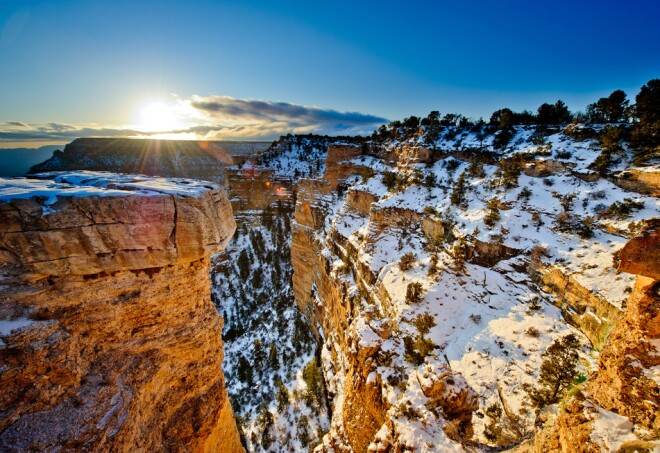Overview
Can’t miss things to do in Quebec City
Quebec City’s iconic cultural highlights rival those you’ll find in other Canadian destinations, and benefit visitors by way of their close proximity to one another. The beautiful Old Town stands as the only walled city north of Mexico, and encircles the famed Château Frontenac, the atmospheric Dufferin Terrace boardwalk, and the stunning Parliament Building, all of which are close to bespoke clothiers, boutiques, and restaurants. More curious sights, like the Morrin Centre—a cultural center and library housed in a 200-year-old building that used to be a prison—the fortified citadel, and the Plains of Abraham battlefield attach more cultural cachet to this picturesque city.
Best of Winter
The Quebec Winter Carnival is legendary for good reason, but the city and the surrounding countryside offer plenty of other thrilling winter adventures. The icy Hôtel de Glace is a great place for for a hot tipple, while igloo, yurt, and shaputuan excursions into wild Quebec are easy to arrange. Cross-country skiing and snowshoeing are ever popular—more than 1,000 miles of trails link regions like Camp Mercier and Mont Sainte Anne—and the city sits near the best alpine runs east of the Rocky Mountains: Sainte Anne features Canada’s largest vertical drop; Le Massif de Charlevoix is home to more than 100 acres of off-piste skiing; and Stoneham Mountain Resort has an Olympic-level half-pipe and the country’s biggest night ski zone.
Food and drink to try in Quebec City
Before you dive into Québécois cuisine, you need to know a few things. In Quebec City, and throughout the province, entrée refers to the appetizer, while the main course is known as the plat principal. The menu du jour is the menu of the day, bon appétit means just what you think it does, and à la vôtre is a simple form of cheers. Now you’re ready to experience the city’s upmarket bistros, outdoor cafés, and quirky culinary outposts. Traditional Québécois fare—which began with the winter staples of the fur-traders and was later inspired by the cuisine of Native Canadians, the French, and the Irish—is heavy on bacon, maple syrup, and meat pies, and ranges from hearty snacks to elegant specialties.
Culture in Quebec City
Quebec City is as wonderfully varied and multi-ethnic as all large Canadian cities, but is also bolstered by its tremendously rich Native Canadian and Francophone heritage. The fortified former capital of New France, the city lording over the St. Lawrence was inhabited by aboriginal peoples long before the French arrived in 1608. The British seized control in 1759, kicking off major migrations of Europeans, who continue to influence local culture. In recent decades, large communities of Haitian, Indian, German, Japanese and other groups have made their own mark on the city; historical, cultural, and artistic remnants, relics, and artifacts abound, and contribute to the city’s glorious air of différence.
Practical Information
Summer days in Quebec City are long and hot and draw visitors by the thousand, while winter, especially during carnival time, can be even busier. Residents of the United States do not require a visa to vacation in Canada. Jean-Lesage International Airport, 20 minutes from downtown, has regular services to and from Montreal, Toronto, New York, Chicago, and even Paris. Taxi fares from the airport to downtown begin at around 30 U.S. dollars; there are no shuttles or public transport options. Quebec City, especially the Old Town, is one of Canada’s most walkable cities, so you won’t need a car. French is the common tongue, though most people in the service industry speak English as well.






